News
Fury of Fiona leaves Turks and Caicos virtually unscathed
Published
3 years agoon
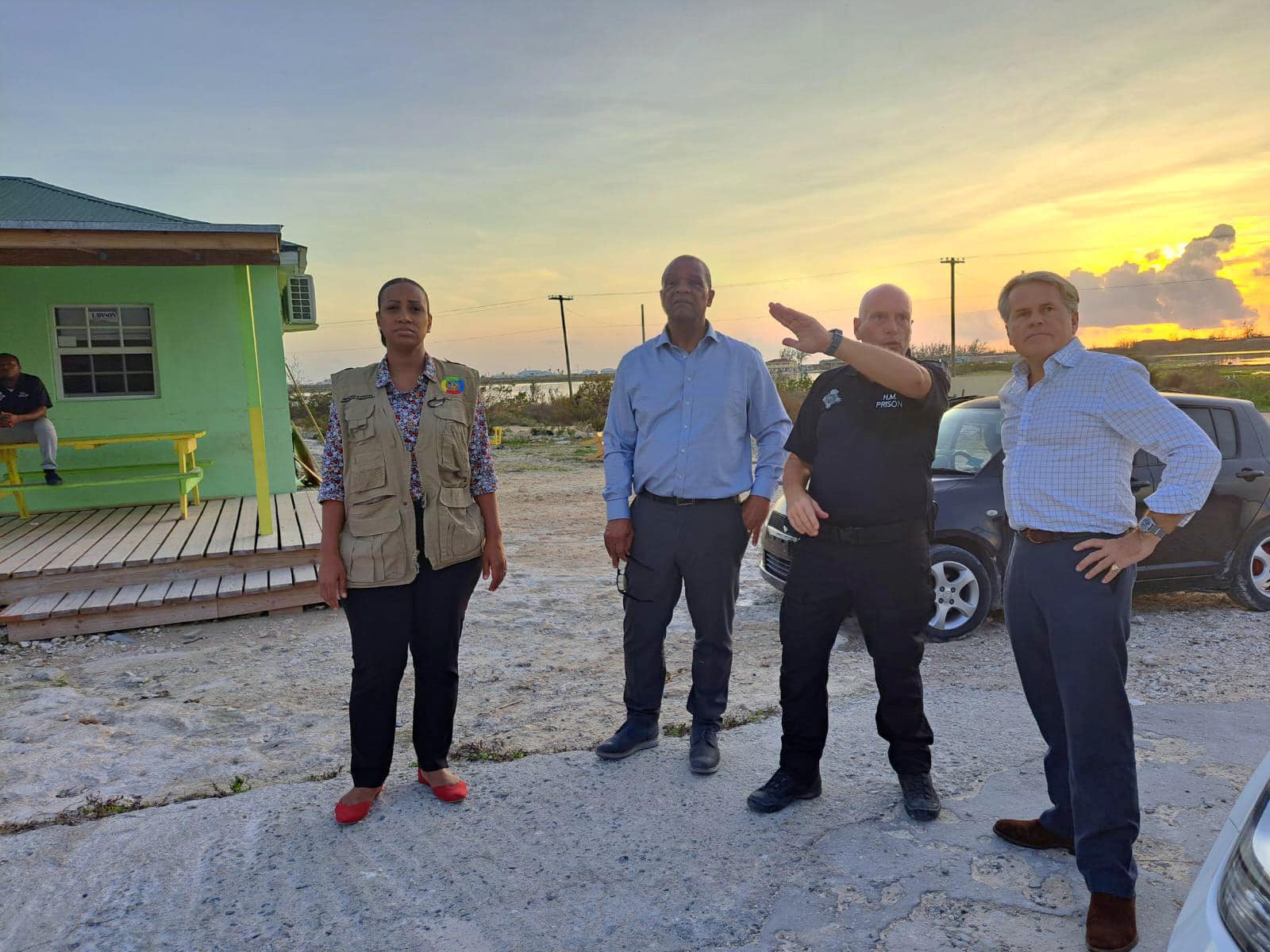
By Deandrea Hamilton & Dana Malcolm
Editorial Staff
#TurksandCaicos, September 30, 2022 – The Turks and Caicos breathed a heavy sigh of relief, recognizing with the passage of major category three Hurricane Fiona, the archipelago had been miraculously spared serious damage. Hurricane Fiona, which is blamed for 27 deaths across the Atlantic Basin, devastated larger nations from September 16-24 to the tune of $12 Billion.
Fiona wreaked havoc on Guadeloupe, Puerto Rico, the Dominican Republic, Bermuda and Canada leaving millions without electricity and dozens homeless. There was intense flooding in Puerto Rico and the entire island lost power, landslides and flooding damaged homes in the DR and whole seaside homes washed out to sea in Canada where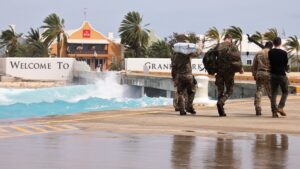 Fiona lashed five Atlantic provinces.
Fiona lashed five Atlantic provinces.
In spite of being hit by the hurricane at category three strength, The Turks and Caicos has only minimal damage to report, according to Premier Washington Misick.
“Early assessment indicates that well hit by a category three hurricane the Turks and Caicos suffered level-one damage which is a credit to the state of our preparedness and the credibility of our infrastructure.”
Misick also credited the country’s resilience to the careful planning of the islands emergency response and the flawless execution by Deputy Governor Anya Williams and her team as well as the upgraded infrastructure installed post Irma and Maria
While the Turks and Caicos is still recovering, according to Governor Nigel Dakin the crisis period has in the rear view mirror of the islands now.
Once the all-clear was given, the main airport, the Providenciales International Airport (PLS) was reopened to air travel. A week after the storm, all airports and ferries were operational again. Digital connection was mostly restored as was electricity.
At the start of this week, Governor Dakin said information shared in recovery meetings exposed the bruises caused by Hurricane Fiona included severe damaged to the one mile causeway linking North and Middle Caicos.
Poles were also laid flat in the hurricane’s 150mph winds.
“Ninety-five of customers across the country now have electricity after Hurricane Fiona,” said FortisTCI, the nation’s electricity provider in its fifth report on restoration work.
At that time, Middle Caicos stood at 55 percent with power back on, once the causeway was cleared of debris. Bambarra and Lorimers on the island, were among the last to get electricity. FortisTCI reported on Friday September 30, both settlements were reconnected.
“At 11:00 p.m. on Thursday, September 29, Middle Caicos now has 96 percent of customers restored. The majority of customers in Bambarra and Lorimers now have electricity. Only a small pocket of customers were pending restoration at the time. The focus has been to energize both settlements via Conch Bar’s electricity generation unit, while crews rebuild damaged sections of the main transmission and distribution network.”
The Governor also updated on the cruise ship industry. He explained Carnival Cruises, after addressing the damage, set a potential opening date for October 4th, pushed back from Thursday September 29 as was listed on the Grand Turk Cruise Centre website.
Students in Grand Turk and the sister islands were able to start attending school by Monday September 26th a week after Fiona and the resulting outages.
Ten days after the storm, FortisTCI has restored connectivity to 99.3 percent of customers across the country. Grand Turk residents were the hardest hit and as of Thursday night, some 95 percent are back online.
The electricity restoration now speeds up reconnections and repairs with FlowTCI, on September 28 the telecoms company gave an update on Grand Turk and North Caicos.
“Fixed broadband for all Flow business customers has been successfully restored. A few customers’ services remain impacted due to a lack of commercial power,” said Flow about Grand Turk, for North Caicos, “The realignment of link between our Minorca Hill and Stubbs Road has been successfully completed. Teams were deployed in North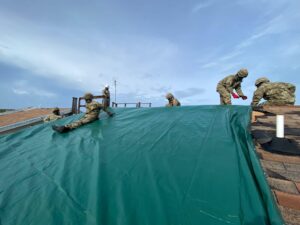 Caicos today (September 28) to focus on restoring fibre connectivity to residential customers and bringing First Caribbean Bank ABM services back online.”
Caicos today (September 28) to focus on restoring fibre connectivity to residential customers and bringing First Caribbean Bank ABM services back online.”
Digicel, less than 48 hours after the hurricane, reported that all of its networks were running, hampered only by customers who were waiting on electricity restoration. Digicel, following Hurricanes Irma and Maria in 2017 decided to migrate to an underground network, which went unaffected in the passage of recent Hurricane Fiona.
Humanitarian support was also immediately available to the Turks and Caicos Islands. With both the Governor and Premier out of the country, due to the State Funeral and National Security meetings in the United Kingdom, it was handy having the TCI Regiment and UK soldiers on hand to led military-styled assistance.
Co-chairs of the National Emergency Operations Center, Anya Williams (acting) Governor and E. Jay Saunders, (acting) Premier were part an aerial reconnaissance mission thanks to the HMS Medway; its helicopter allowed a birds eye view of the damage done by the storm.
The intel gain guided clean-up and allowed the leaders to connect with islanders who faced the most ferocious part of the storm, this included Salt Cay.
Despite the fairly swift recovery Governor Nigel Dakin reminds that the season is not yet over and residents should prepare for a potential second encounter, praying for the best while expecting the worst.
Since then, Hurricanes Gaston, Hermine and Ian have formed. Ian, which grew to near category five strength over the state of Florida, is now blamed for 21 deaths, has left 2.5 million in the dark and as the surge waters subside, US President Joe Biden pledged full support to rebuild.
You may like
-
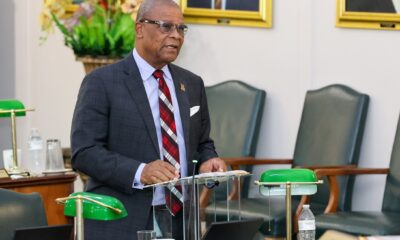

2,846 Jobs in the Pipeline; TCI with $430 Million Cash
-


Pelican Energy TCI Launches After Vision Ridge Partners Acquires FortisTCI
-


Premier Washington Misick to UK: “If You Can’t Manage National Security—Turn It Over to Us”
-


A Nation Under Siege: Premier Demands UK Action After Deadliest Mass Shooting in TCI History
-


Premier Misick Sets the Tone for Justice Reform in Turks and Caicos
-


Premier Misick and Ministers ‘adamantly opposed’ 49 grants – Governor’s approval sparks outrage
News
Commonsense, Not Confrontation: Why Kamla Persad-Bissessar Is Right
Published
2 weeks agoon
December 27, 2025
This debate did not start with Donald Trump, and it did not start this month.
For more than a decade, this reporter has had a front-row seat to repeated, urgent calls from across the Caribbean for stronger intervention by the United States in response to gun- and narcotics-fuelled violence that has hollowed out our communities. Long before today’s headlines, leaders warned that transnational gangs were outgunning police, draining public resources and stealing our youngest people.
Much of the public messaging leaned toward calls for fewer guns flowing from the United States, but the practical response from Washington evolved into something else: tactical undergirding of the Caribbean. Training, intelligence sharing, maritime surveillance and joint operations expanded under successive U.S. administrations — Republican and Democrat alike.
Then came Venezuela.
President Nicolás Maduro proved himself an unhinged and destabilising force, openly threatening Guyana’s oil-rich territory and pushing the region to the brink of a conflict no Caribbean state could afford. The United States showed up. The threat of war was blunted. That mattered.
But while geopolitical flames were contained, the narcotics trade exploded.
CARICOM convened emergency meetings on transnational gang violence. Crime became so pervasive that it was formally classified as a public health threat. Entire communities were terrorised. Courts clogged. Police forces stretched beyond capacity.
And now — quietly but noticeably — the tempo has shifted.
While no single forensic study can capture the full picture, it is easily verifiable on the ground that major narcotics busts and trafficking activity have slowed in recent months. Something has changed. Pressure works.
This is the reality Prime Minister Kamla Persad-Bissessar is responding to.
Her critics accuse her of breaking ranks. What she is actually doing is refusing to indulge in strategic hypocrisy — demanding international help to confront narco-terrorism while appearing to defend or excuse the very networks and actors we have spent years condemning.
Sovereignty is not an insult. The Caribbean invokes it constantly. To deny it to the United States — especially when the policies in question were telegraphed months in advance and remain adjustable — is not diplomacy. It is posturing.
What is most troubling is the region’s selective memory. CARICOM has directed months of rhetorical fire at Trump-era policies, yet when disaster struck — from security crises to Hurricane Melissa — the United States remained one of the region’s most reliable supporters. Outcomes matter more than allegiance theatre.
Kamla Persad-Bissessar is not suffering from Trump Derangement Syndrome. She is applying commonsense statecraft. She understands that small states do not gain leverage by moral outrage alone, and that credibility is lost when we appear aligned with individuals, regimes or activities we ourselves have deemed a threat.
Her warning to CARICOM is simple and necessary: do not undermine your own cause.
The Caribbean’s fight against narco-violence, corruption and instability has been long, costly and painful. If pressure is finally producing results, we should be wise enough to recognise it — and brave enough to say so.
Angle by Deandrea Hamilton. Built with ChatGPT (AI). Magnetic Media — CAPTURING LIFE.
News
Beaches Turks and Caicos Showcases and Supports Local Creativity
Published
4 months agoon
September 12, 2025
September 12, 2025
PROVIDENCIALES, Turks & Caicos Islands – The Turks and Caicos Islands are home to a wealth of creativity, from artisans and craft vendors to musicians and performers. Beaches Turks and Caicos, the Caribbean’s leading all-inclusive family resort, has pledged its continued support for these individuals by providing meaningful platforms for them to share their skills and stories with guests from around the world.
The resort’s commitment is most evident in its weekly Cultural Night showcase, where visitors are immersed in the vibrant traditions of the islands. Guests enjoy live performances which feature local music genres such as ripsaw, while artisans display and sell handmade creations. This event not only enriches the guest experience but also strengthens economic opportunities for local entrepreneurs.
Entertainment Division Manager Garett Bailey emphasized the significance of Cultural Night, “we want to showcase everything the Turks and Caicos Islands culture has to offer. Our goal is for guests to leave with a deeper appreciation of the island’s art, music and traditions, while giving local talent the opportunity to share their creativity with visitors from across the globe.”
Beyond Cultural Night, Beaches Turks and Caicos also welcomes local craft vendors onto the resort every Wednesday and Friday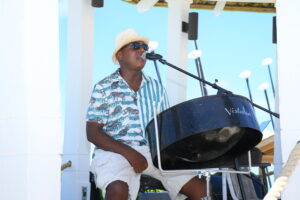 where they are offered a direct space to market their goods. Guests have easy access to the Turks and Caicos Cultural Marketplace, where they can purchase authentic local arts and crafts.
where they are offered a direct space to market their goods. Guests have easy access to the Turks and Caicos Cultural Marketplace, where they can purchase authentic local arts and crafts.
Managing Director, James McAnally, highlighted how these initiatives reflect the resort’s broader mission, “we are committed to celebrating and sharing the vibrant culture of these islands with our guests. By showcasing local artistry and music, we not only provide entertainment but also help sustain and grow the creative industries of the Turks and Caicos Islands. From our cultural showcases to nightly live music, we are proud to create authentic connections between our guests and the people of these islands.”
Local musician Keon Hall, who frequently performs at the resort, expressed gratitude for the ongoing partnership, “being able to share my music with Beaches’ guests has created lasting relationships. Some visitors return year after year and request songs from previous performances. This partnership continues to celebrate what we do and strengthens the bond between local artists and the resort.”
The resort’s support of local artisans and entertainers extends beyond business opportunity; it is about preserving heritage and sharing stories. Guests take home more than souvenirs; they leave with experiences that deepen their understanding of Turks and Caicos’ culture and history.
Public Relations Manager, Orville Morgan, noted the importance of this commitment, “for many visitors, these interactions represent their first genuine connection to the Turks and Caicos Islands. From artisans and musicians to farmers and transport operators, our local talent helps shape every guest experience. At Beaches, we are proud to give them the stage to share their stories and their heritage.”
Beaches Turks & Caicos remains dedicated to developing cultural connections and supporting the artisans, musicians and entrepreneurs whose creativity makes the Turks and Caicos Islands unique. Each guest experience is an opportunity to celebrate and sustain the spirit of the islands.
Caribbean News
“Barbecue” is Cooked! US Turns Over 11 Million Haitians into Potential Informants with $5 Million Bounty
Published
5 months agoon
August 12, 2025
August 12, 2025
The United States just set fire to the underworld in Haiti — and this time, the smoke might finally flush out the man many call the most feared in the Caribbean.
On Tuesday, the U.S. government slapped a $5 million bounty on the head of Jimmy “Barbecue” Chérizier, the ex-police officer turned gang boss accused of orchestrating massacres, torching neighborhoods, and strangling Haiti’s capital into chaos. This isn’t just a headline — it’s a full-blown game-changer.
turned gang boss accused of orchestrating massacres, torching neighborhoods, and strangling Haiti’s capital into chaos. This isn’t just a headline — it’s a full-blown game-changer.
That kind of cash — offered under the State Department’s Transnational Organized Crime Rewards Program — is enough to turn the country’s entire population, more than 11 million people, into potential informants overnight. Add the millions in the Haitian diaspora, and Chérizier isn’t just wanted. He’s surrounded.
The Number That Changes Everything
Five million U.S. dollars today equals about 655 million Haitian Gourdes. In a country where many scrape by on less than $5 a day, that’s not just life-changing — it’s life-defining. It’s enough to rebuild homes, put generations through school, or buy a one-way ticket far from the gunfire.
In a place where trust is scarce and survival is everything, that figure is more than tempting — it’s irresistible. For Chérizier, it means every friend could be a future informant, and every loyalist might be calculating the cost of staying loyal.
‘We Will Find Them’ — Jeanine Pirro, U.S. Attorney
Jeanine “Judge Jeanine” Pirro, the U.S. Attorney, set the tone with fire in her voice. “This indictment is the first of its kind,” she announced. “Jimmy Chérizier, also known as ‘Barbecue,’ is a notorious gang leader from Haiti who has orchestrated and committed various acts of violence against Haitians, including the 2018 La Saline attack in which approximately 71 people were killed. He both planned and participated in that massacre.
“Anyone who is giving money to ‘Barbecue’ cannot say, ‘I didn’t know.’ They will be prosecuted, and we will find them. They are supporting an individual who is committing human rights abuses, and we will not look the other way.”
Pirro wasn’t just going after Chérizier. She was sending a warning to the Haitian diaspora accused of feeding his war chest from abroad: the days of claiming ignorance are over.
‘No Safe Haven’ — Darren Cox, FBI
Then came Darren Cox, Deputy Assistant Director of the FBI, delivering the muscle of America’s most powerful investigative force. “There is no safe haven for Chérizier and his network,” Cox declared. “We are closing every link, every cell.” Since January, he said, the FBI has arrested three Top Ten fugitives, taken more than 19,000 criminals off the streets, and seized thousands of tons of narcotics — enough to save millions of lives across the U.S.
The FBI’s Miami and Houston offices have already bagged one of Chérizier’s Viv Ansanm associates inside the United States without firing a shot. “These efforts are a deliberate and coordinated plan,” Cox said, “to protect our communities and confront escalating threats from terrorist organizations like Viv Ansanm.”
‘Three-Year Investigation’ — Ivan Arvelo, HSI
Ivan Arvelo, Assistant Director of Homeland Security Investigations, brought the receipts. “This is the result of a three-year investigation into Chérizier’s procurement networks, cash pipelines, and operational financing that violates sanctions,” he explained. Arvelo described 400 structures destroyed, entire communities erased, and a gang exploiting U.S. dollars, technology, and immigration loopholes to keep its killing machine running. “We tracked how Americans unwittingly bankrolled brutality,” he said — proof that the net is tightening both inside Haiti and abroad.
‘The Worst of the Worst’ — Chris Lambert, State Department
Chris Lambert, representing the State Department’s International Affairs division, gave the political bottom line.
“Mass violence in Haiti must end,” Lambert said. “The instability resulting from Chérizier’s actions fuels illegal migration, regional instability, and transnational crime. We will continue to apply every tool available — including our rewards programs — to stop the spread of unchecked violence, especially to target the worst of the worst criminal leaders threatening the people of our hemisphere.”
instability, and transnational crime. We will continue to apply every tool available — including our rewards programs — to stop the spread of unchecked violence, especially to target the worst of the worst criminal leaders threatening the people of our hemisphere.”
Lambert confirmed what many have long known: Chérizier is not just a gang leader. He commands Viv Ansanm, officially designated in May as a Foreign Terrorist Organization. In the eyes of the U.S., that makes him not just Haiti’s problem — but everyone’s.
Why Haitians May Not Resist
In Haiti, money talks — loudly. And when you put 655 million Gourdes on the table, it shouts.
That’s the kind of figure that turns casual acquaintances into informants and makes even the most hardened loyalist wonder if the payout is worth more than the risk. It’s not a matter of “if” word gets out, it’s a matter of “who will be first to collect.”
For grieving families, it’s a chance at justice. For the desperate, it’s a chance at survival. For Haiti as a whole, it’s hope — wrapped in the most dangerous of temptations.
An Answer to Prayers
For years, Haiti’s headlines have been a scroll of horrors — kidnappings, executions, burned neighborhoods, bodies in the streets. Chérizier’s name has been attached to too many of them.
This move by the U.S. isn’t just strategy. It’s personal. It’s a signal to every Haitian — at home or abroad — that the days of impunity could be ending.
I’ll admit it: when I heard the news, I danced, I sang, and I nearly cried. Not because $5 million is a lot of money, but because of what it means — the possibility, at last, of stopping the man accused of helping turn Haiti into hell on earth.
Four officials, four angles, one mission: Pirro’s fire, Cox’s grit, Arvelo’s precision, Lambert’s conviction. Together, they’ve put the heat on “Barbecue” like never before.
BBQ is cooked. The only question now is: which one of over 11 million potential informants will serve him up?





